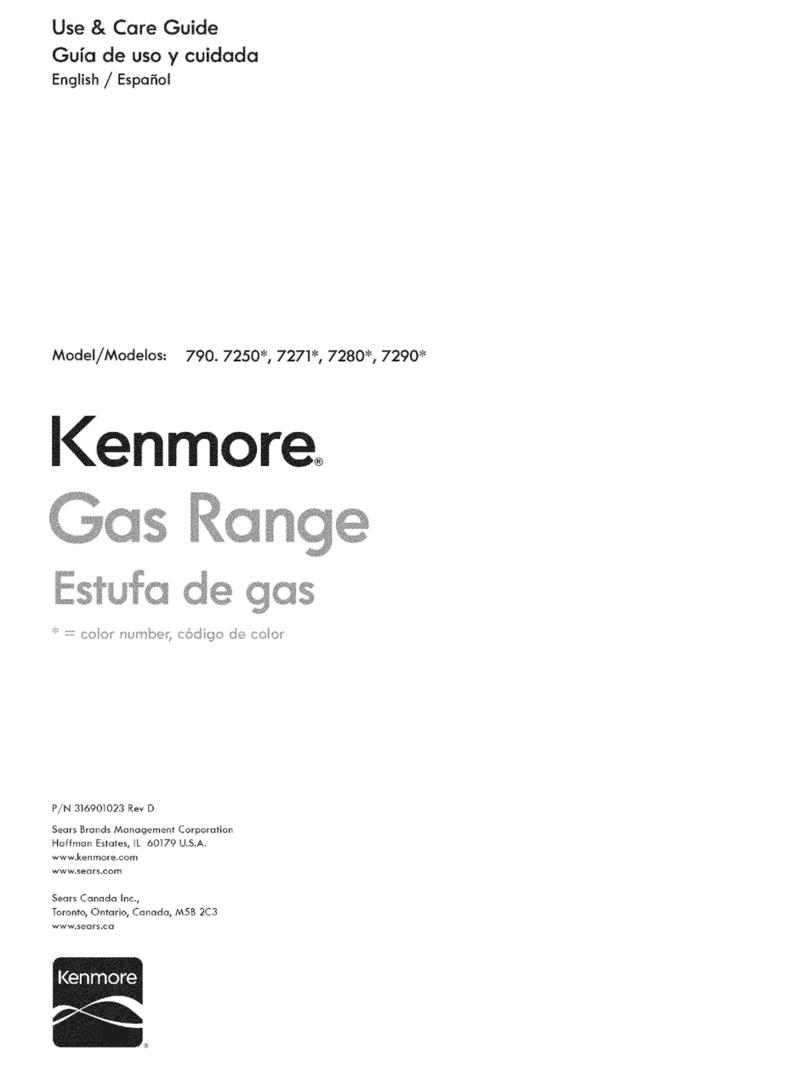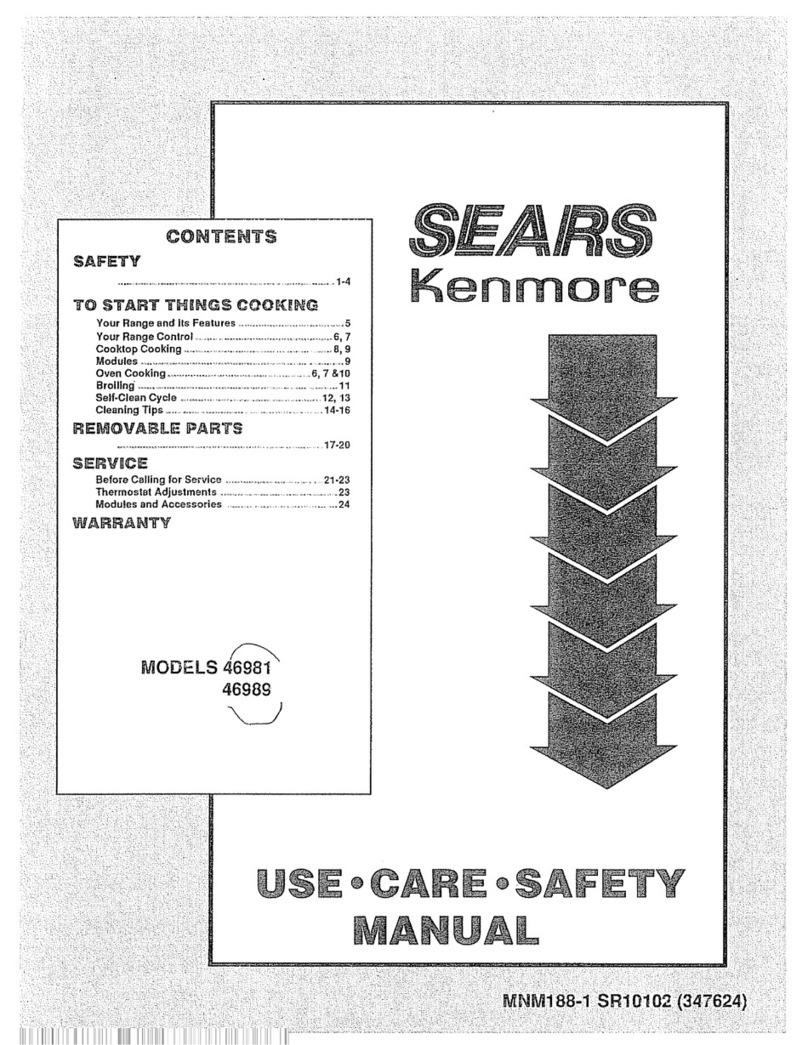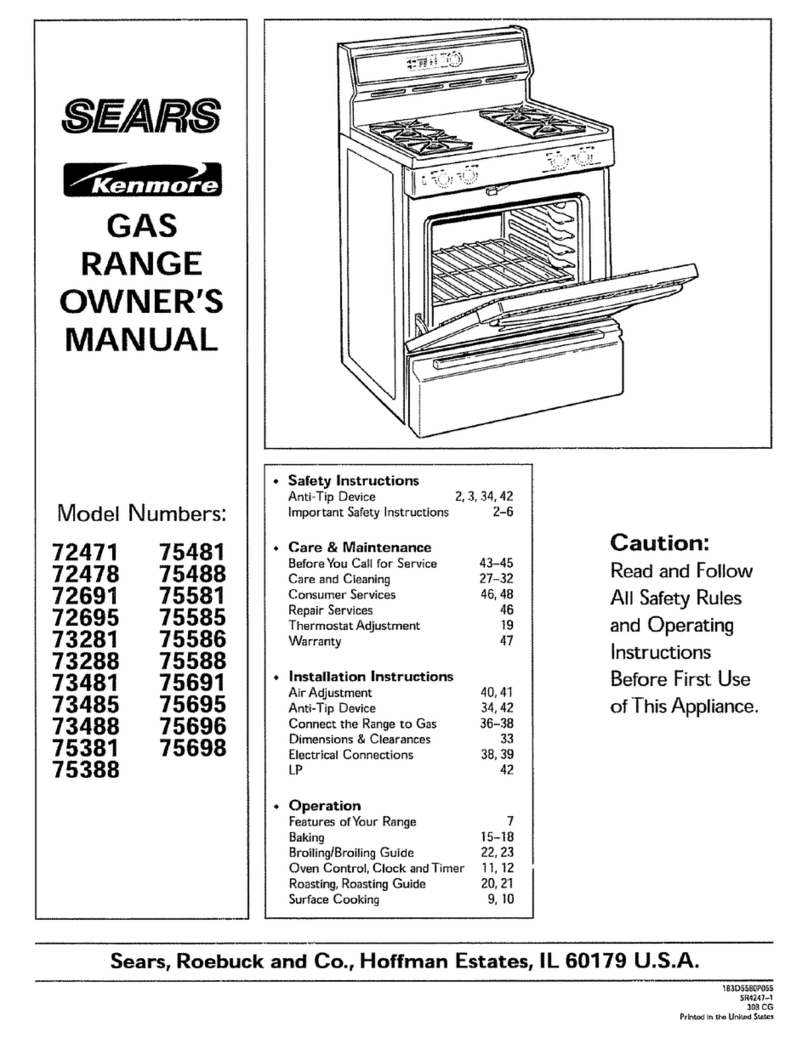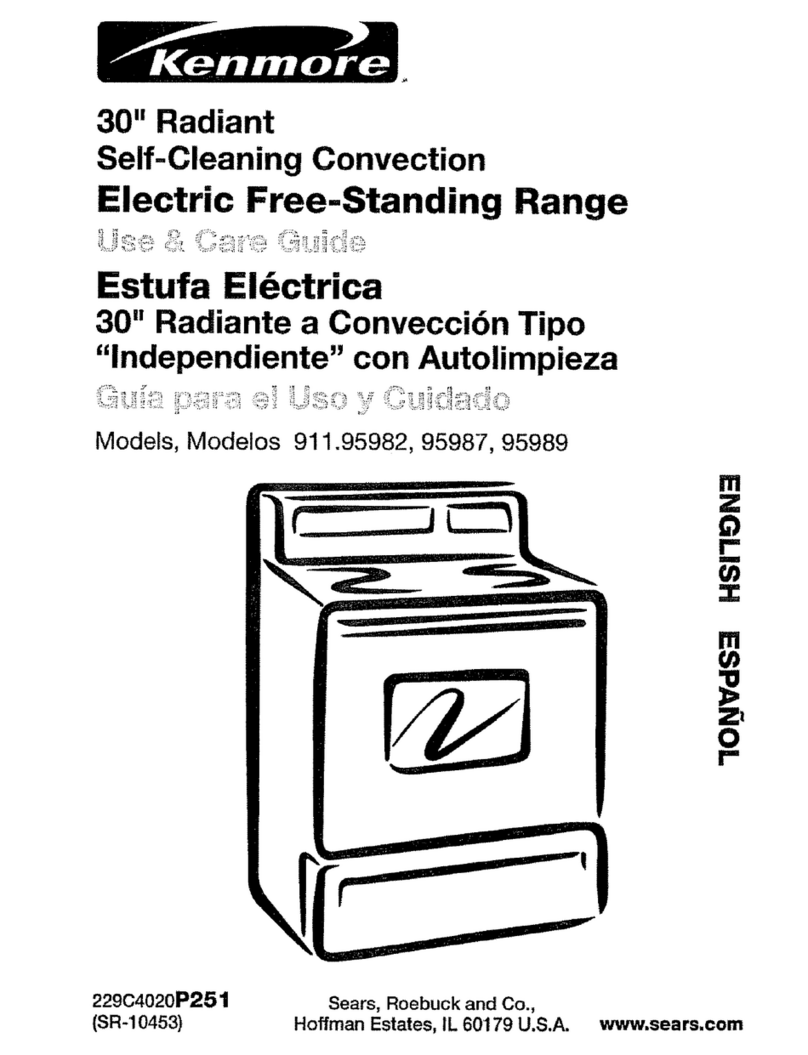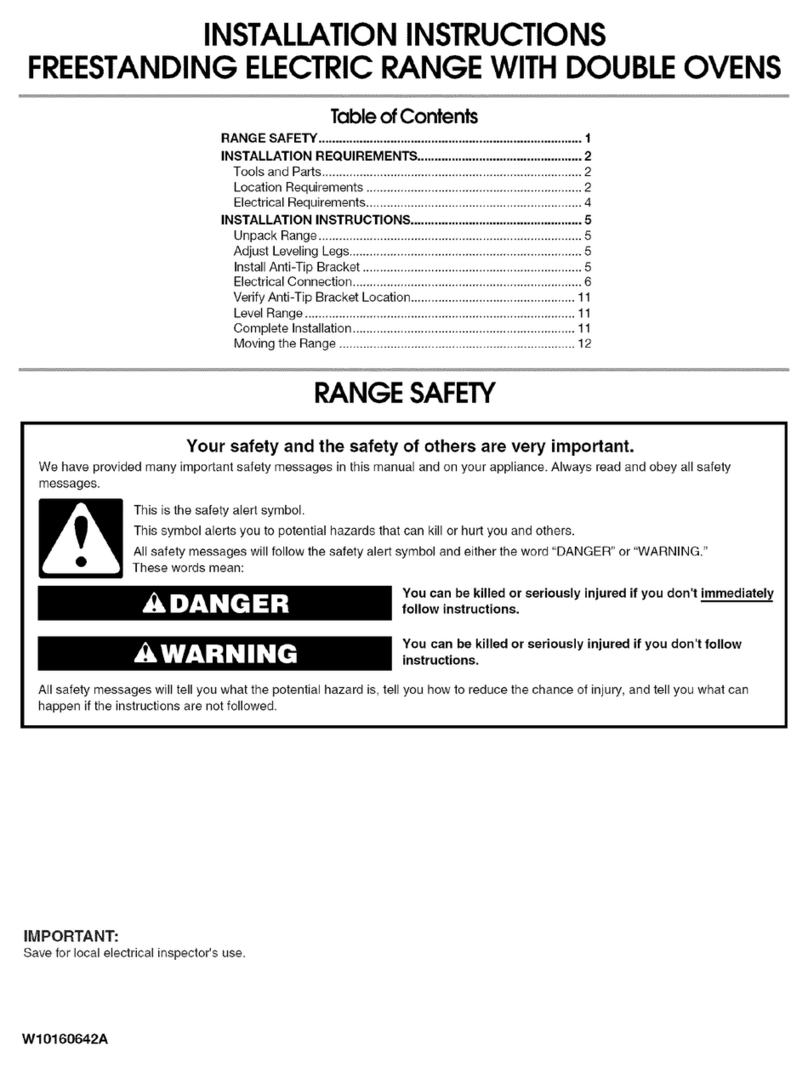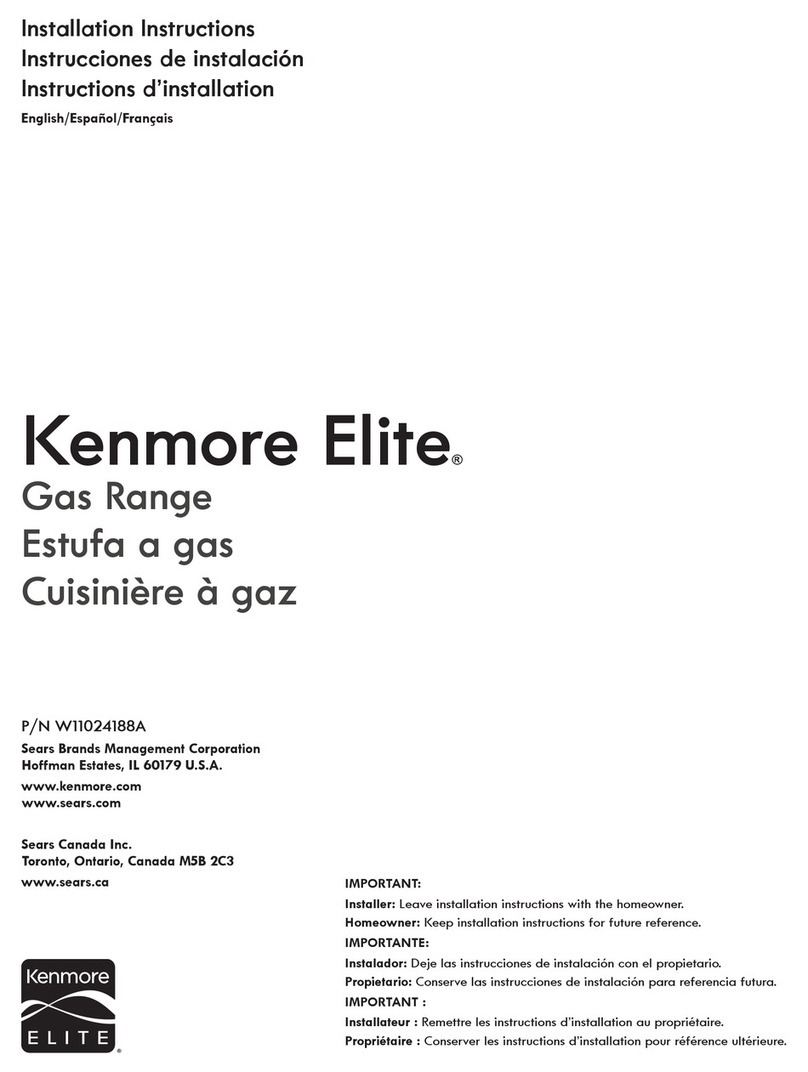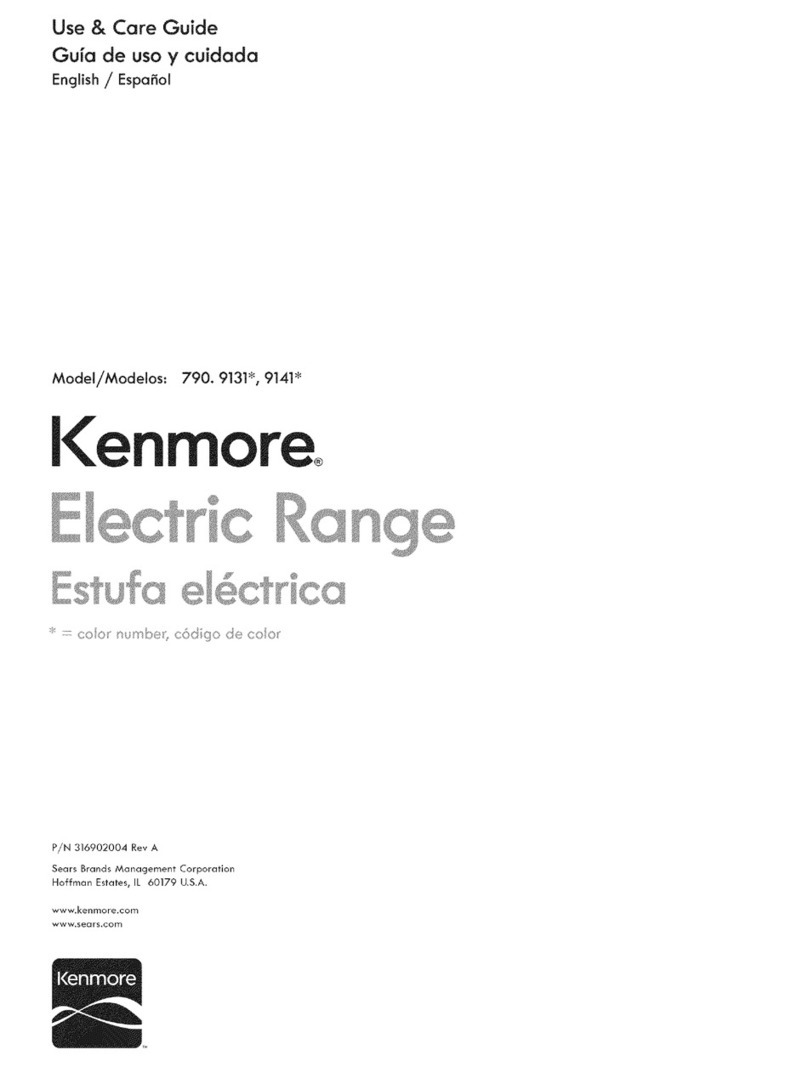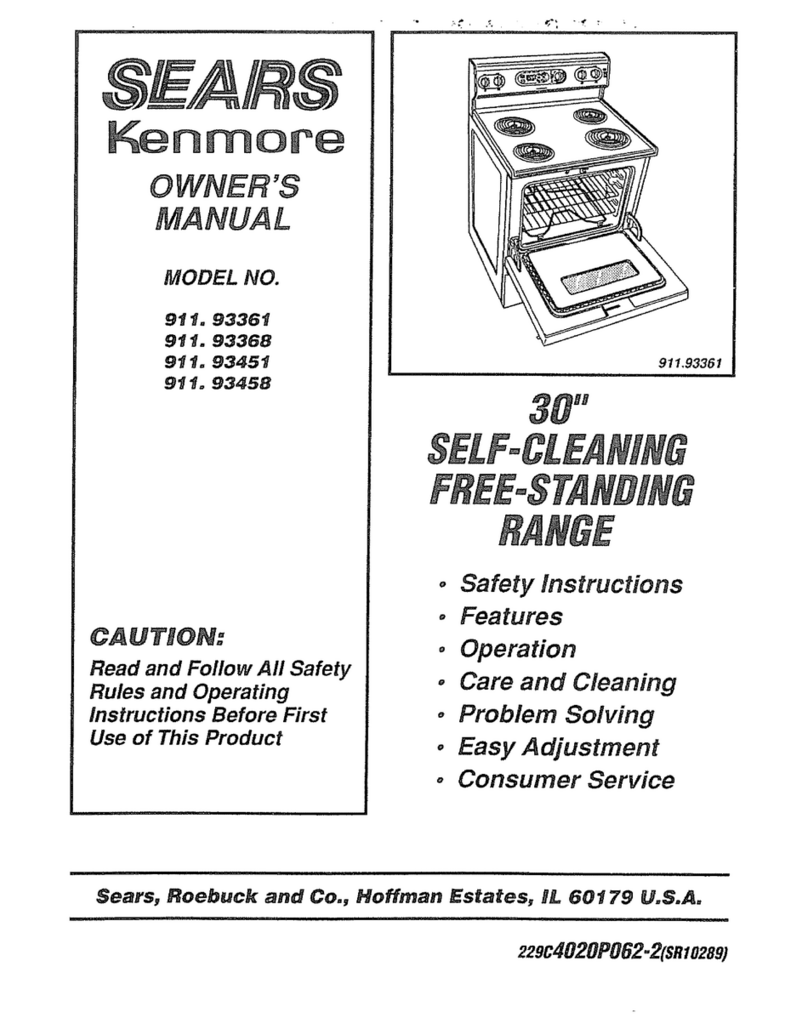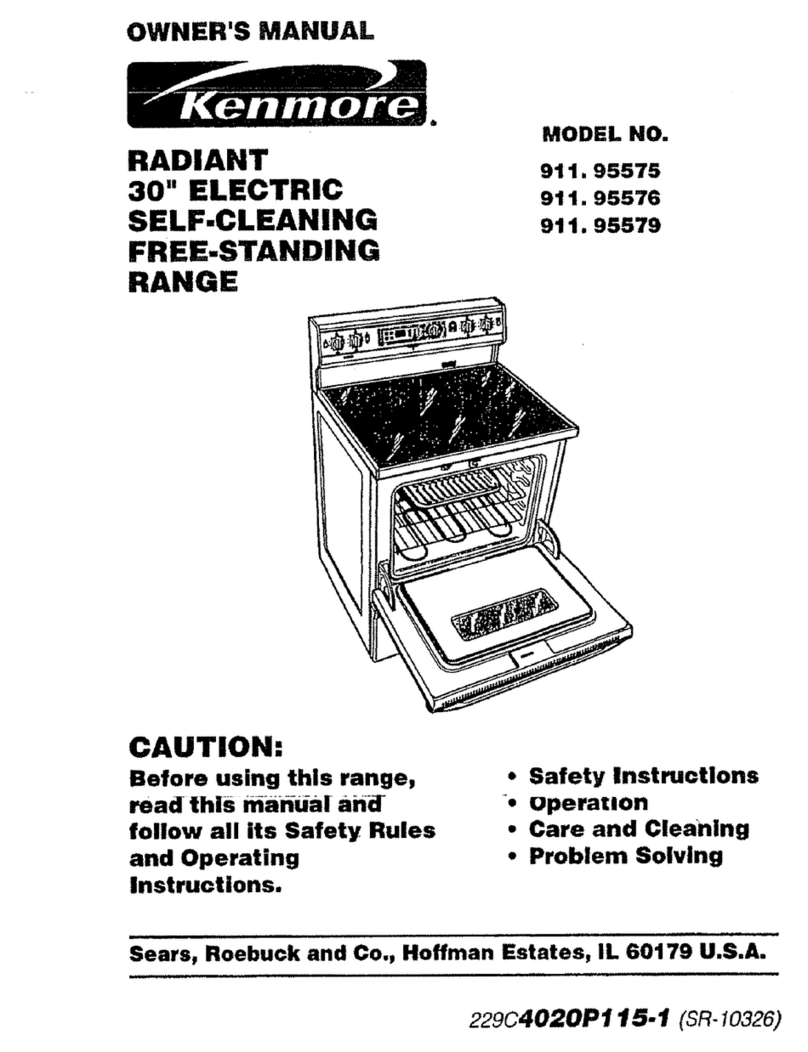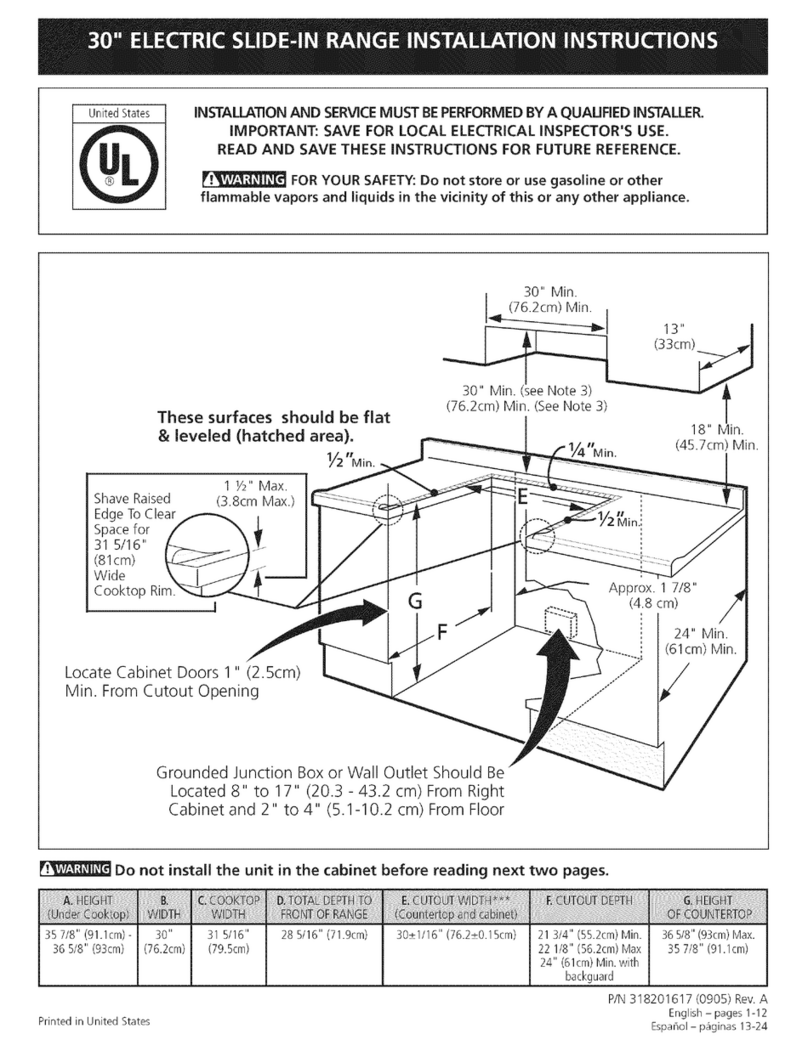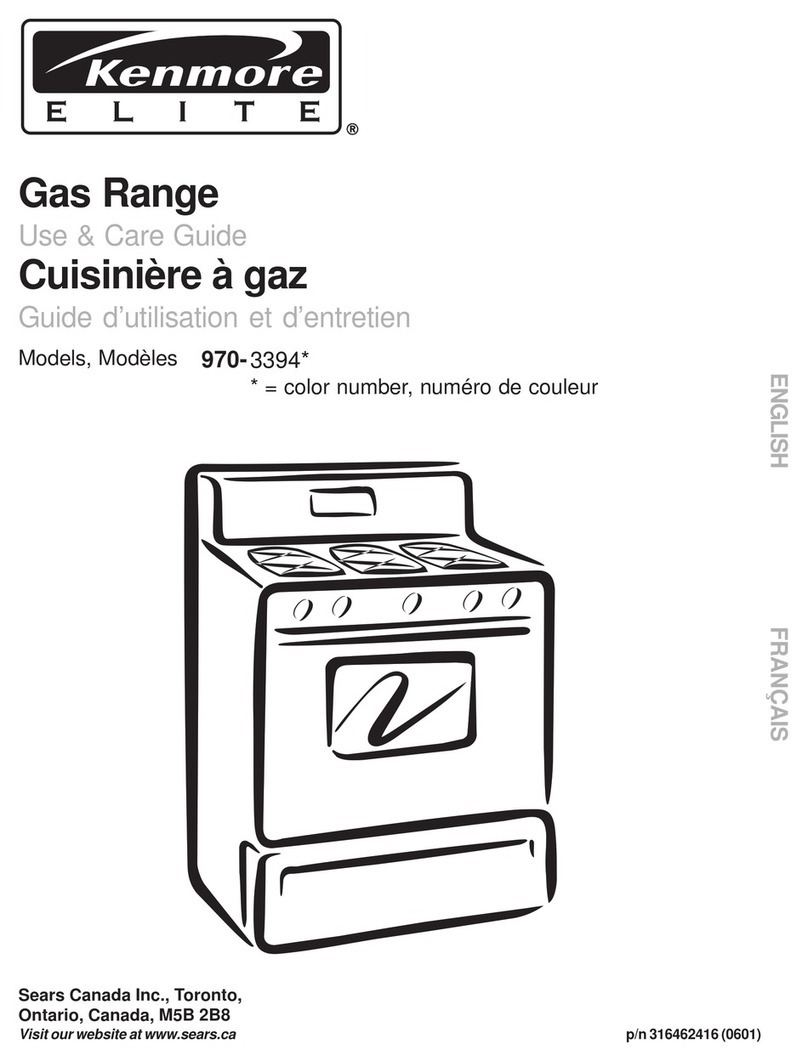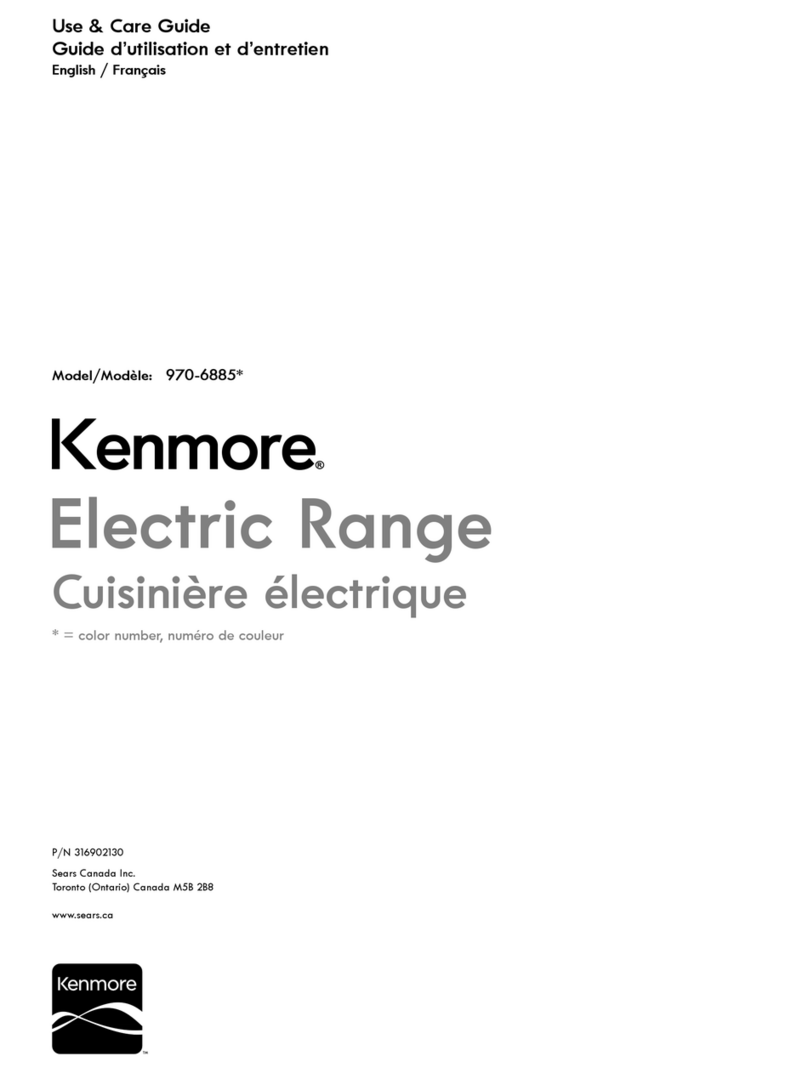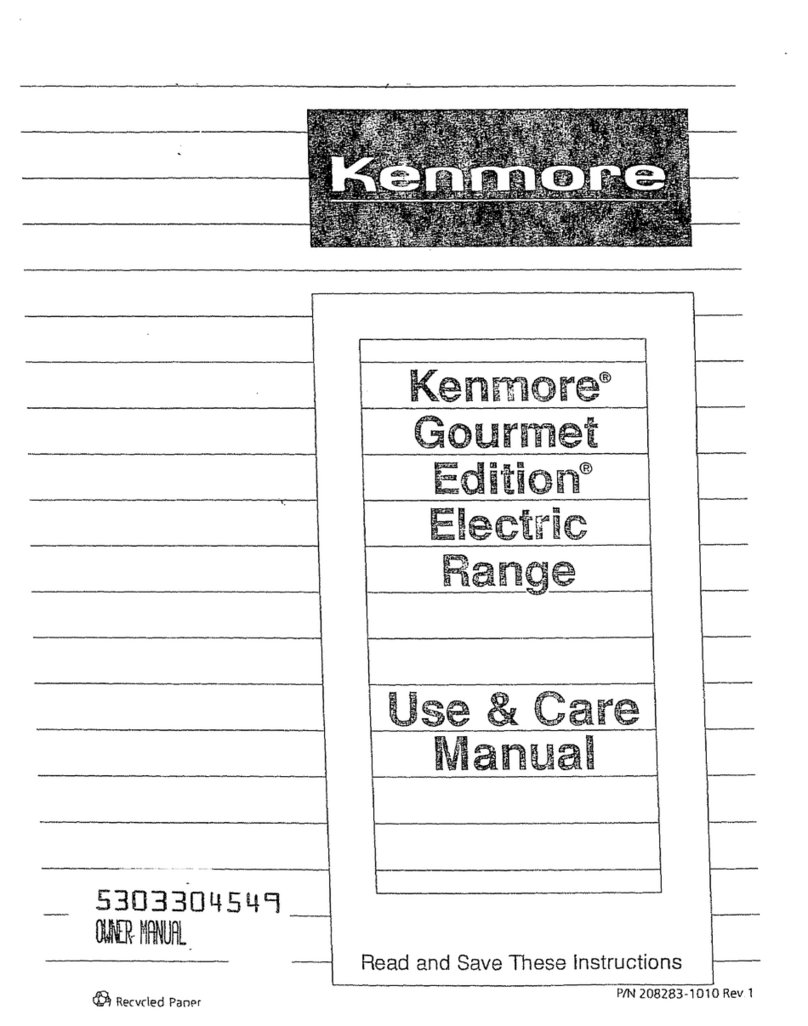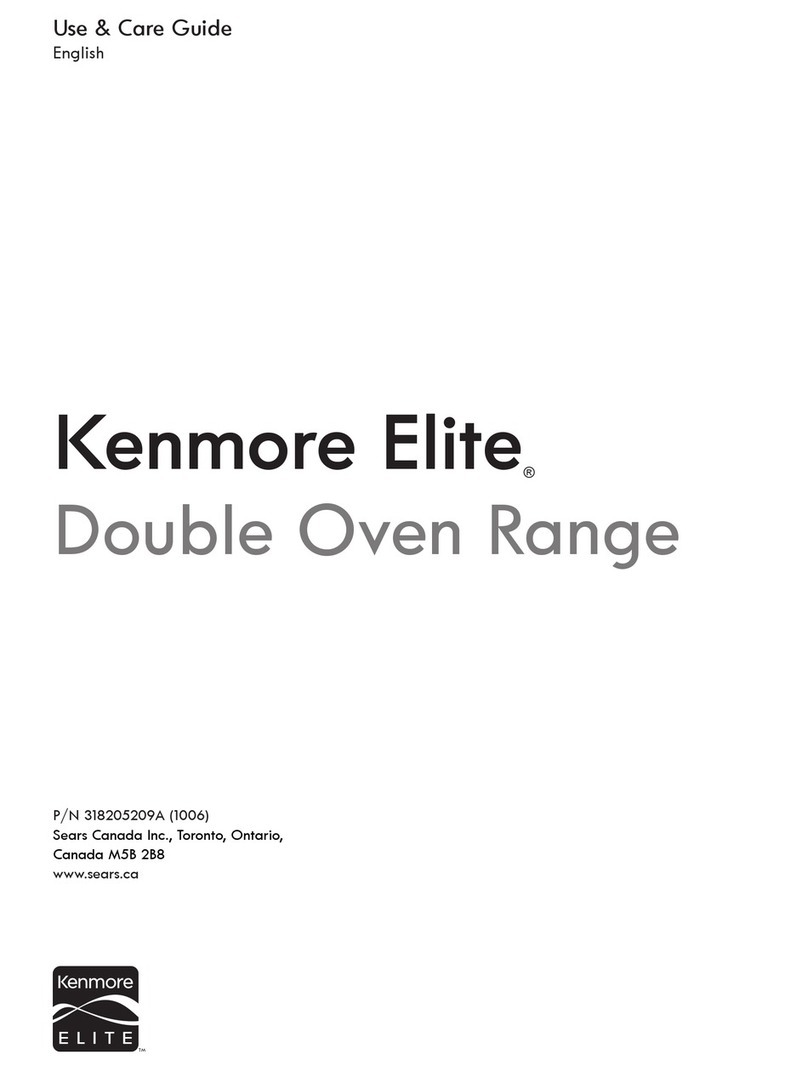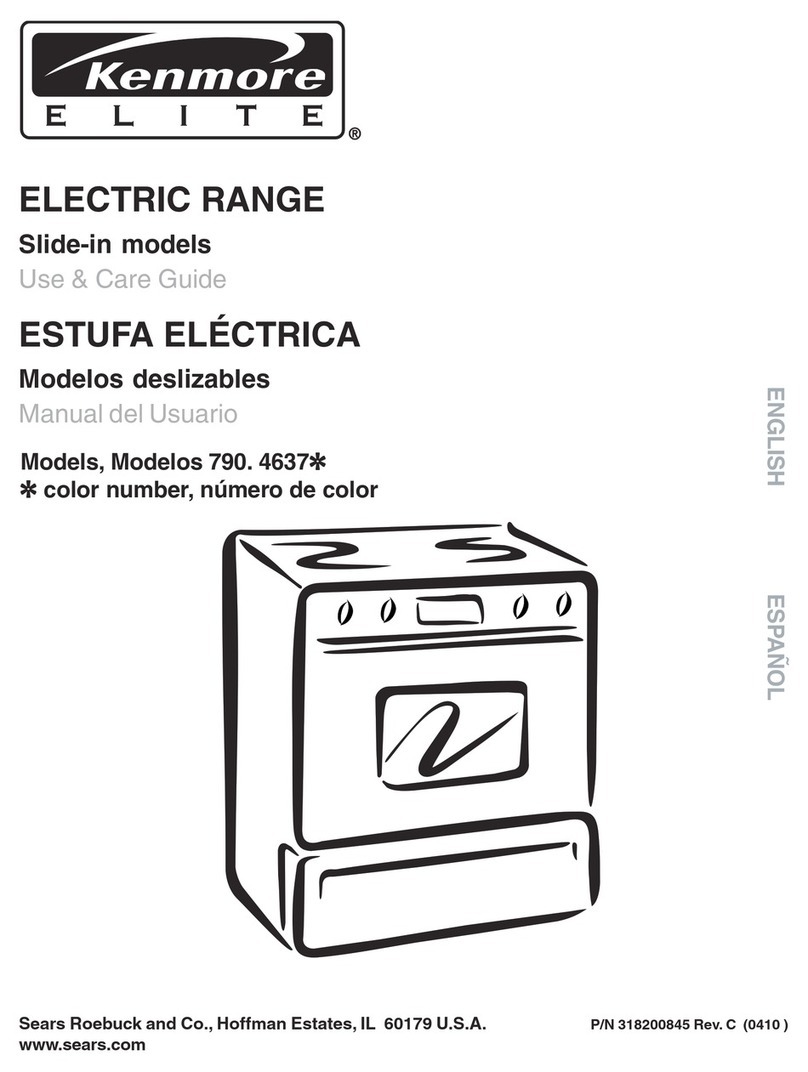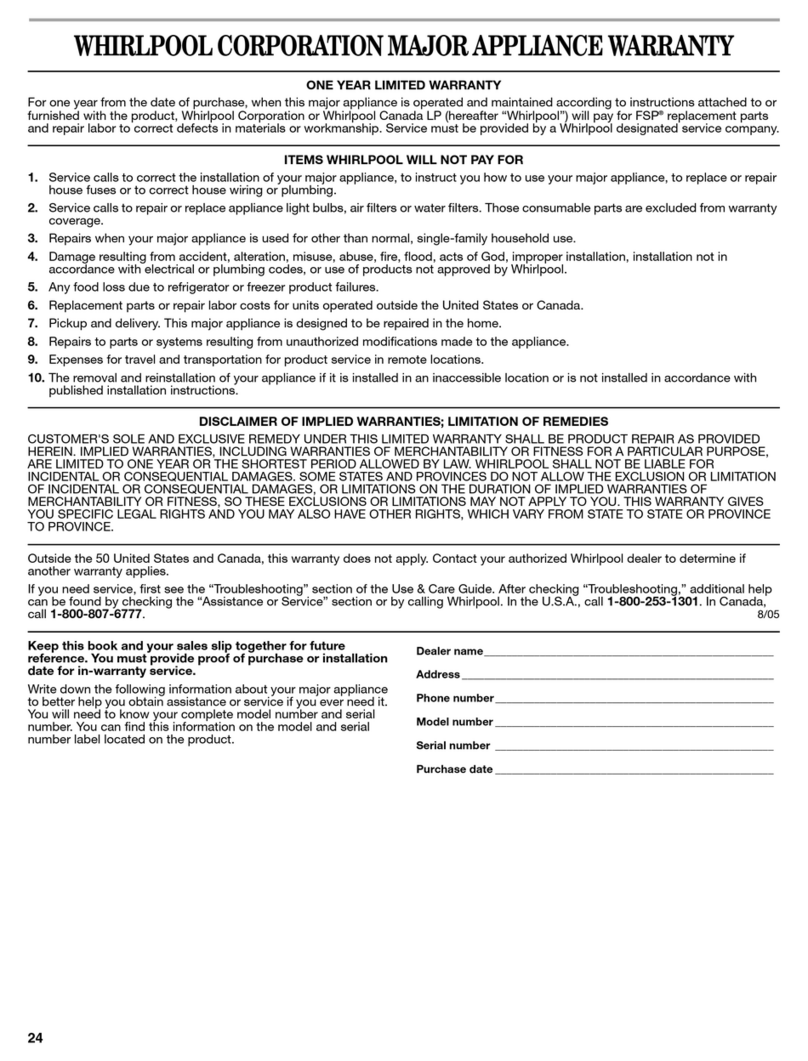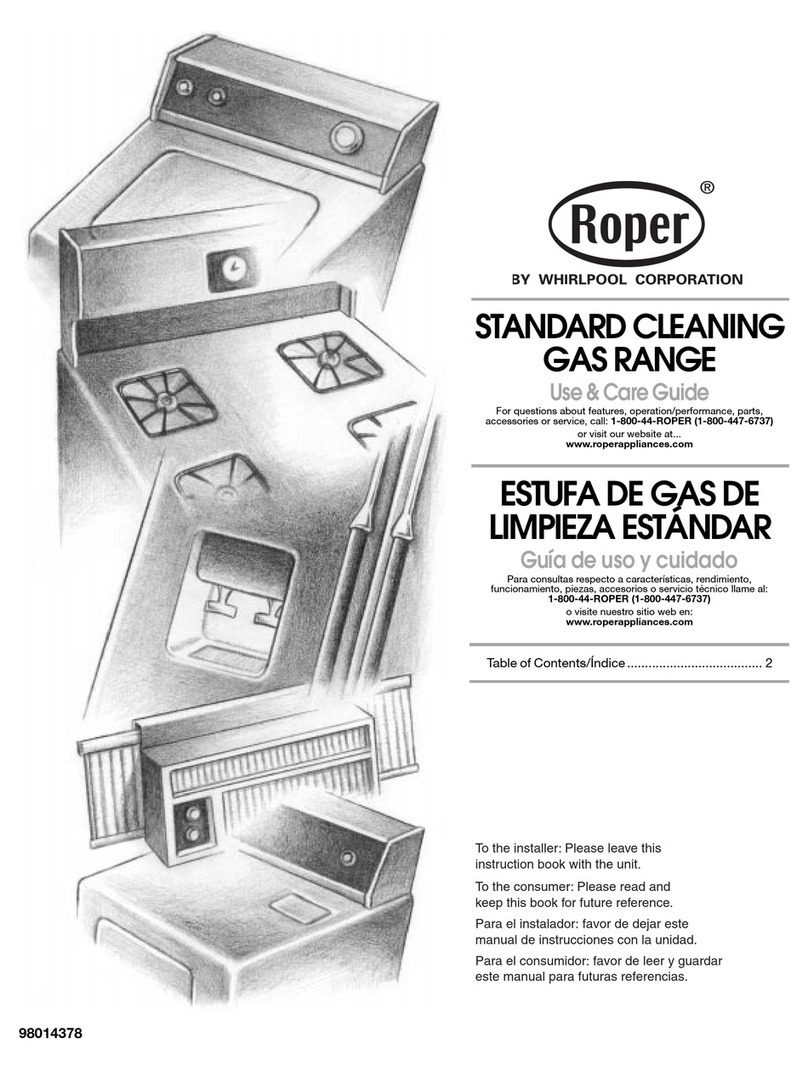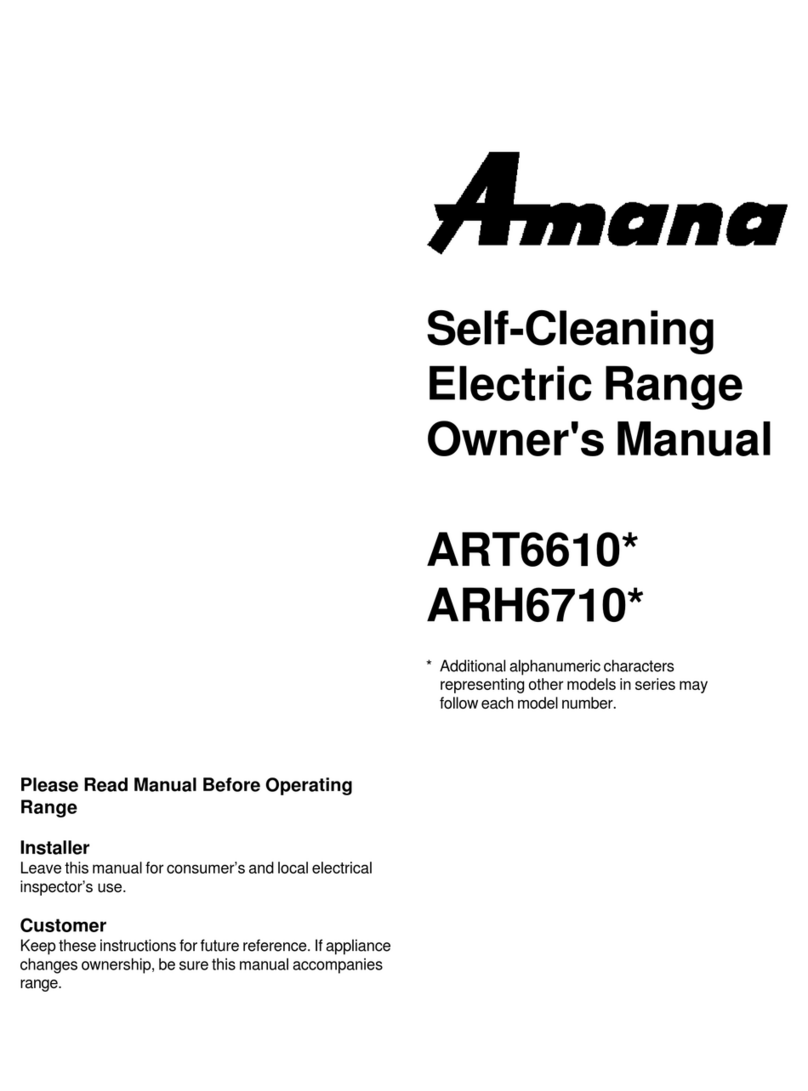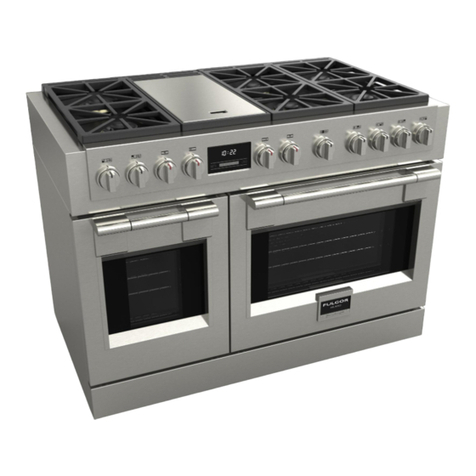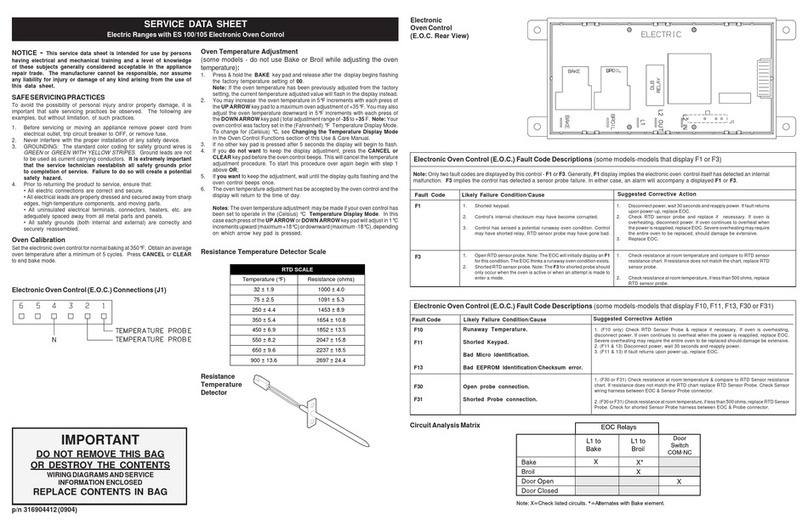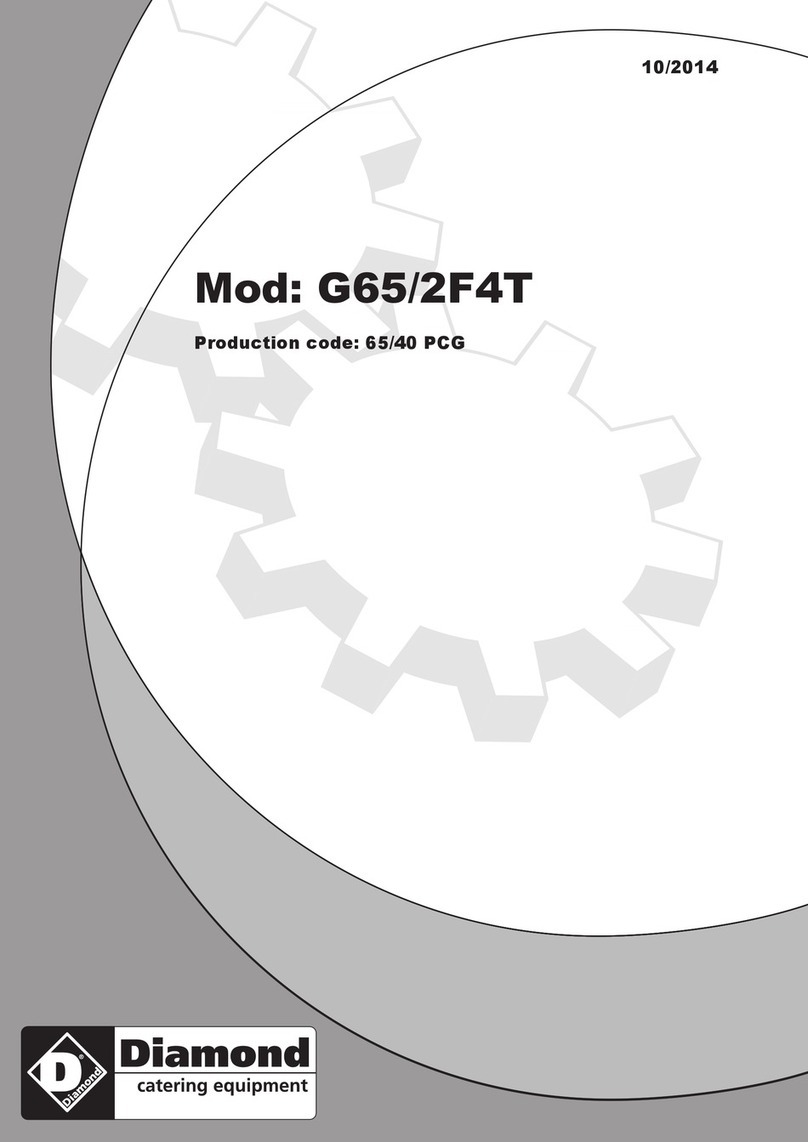
IMPORTANT SAFETY INSTRUCTIONS
• DO NOT TOUCH SURFACE UNITS, AREAS
NEAR THESE SURFACES, OVEN HEATING
ELEMENTS OR INTERIOR SURFACES. Surface
units may be hot even though they are dark in
color. Areas near surface units may become hot
enough to cause burns. During and after use,
do not touch, or let clothing or other flammable
materials touch these areas until they have had
sufficient time to cool. Among these areas are the
cooktop, surfaces facing the cooktop, the oven
vent openings and surfaces near these openings,
oven door and window.
• Wear Proper Apparel. Loose-fitting or hanging
garments should never be worn while using
the appliance. Do not let clothing or other
flammable materials contact hot surfaces.
Never use your appliance for
warming or heating the room.
•Do Not Use Water or Flour on Grease Fires.
Smother the fire with a pan lid, or use baking
soda, a dry chemical or foam-type extinguisher.
• When heating fat or grease, watch it closely. Fat or
grease may catch fire if allowed to become too hot.
•Use Only Dry Potholders. Moist or damp
potholders on hot surfaces may result in burns
from steam. Do not let the potholders touch hot
heating surface units. Do not use a towel or other
bulky cloth instead of a potholder.
•Do Not Heat Unopened Food Containers.
Buildup of pressure may cause the container to
burst and result in injury.
IMPORTANTmDo not attempt to operate the
appliance during a power failure. If power fails,
always turn off the appliance. If the appliance is
not turned off and the power resumes, it will begin
to operate again. Once the power resumes, reset
the clock and oven function.
Electronic controllers can be
damaged by cold temperatures. When you use
your range for the first time, or if it has been used
for a long period of time, make sure that it has
been exposed to a temperature above 0°C/32°F
for at least 3hours before connecting it to the
power supply.
IMPORTANT INSTRUCTIONS FOR USING
YOUR COOl(TOP
Know which knob controls each surface
heating unit. Place a pan of food on the unit
before turning it on, and then turn the unit off
before removing the pan.
Use proper pan size. This appliance is equipped
with one or more surface units of different sizes.
Select utensils having flat bottoms large enough
to cover the surface unit. The use of undersized
utensils will expose a portion of the surface
heating unit to direct contact and may result in
ignition of clothing. Proper relationship of utensil
to the surface unit will also improve efficiency.
Utensil handles should be turned inward and
not extend over adjacent surface units. To
reduce the risk of burns, ignition of flammable
materials, and spillage due to unintentional
contact with the utensil.
Never leave surface units unattended m
Boilovers cause smoking and greasy
accumulations that may ignite, or a pan that has
boiled dry may melt.
Glazed cooking utensilsmOnly certain types of
glass, glass/ceramic, ceramic, earthenware, or
other glazed utensils are suitable for rangetop
service without breaking due to the sudden
change in temperature. Check the manufacturer's
recommendations for cooktop use.
IMPORTANT INSTRUCTIONS FOR USING
YOUR OVEN
Use Care When Opening an Oven Door_Stand
to the side of the appliance when opening the
door of a hot oven. Let hot air or steam escape
before you remove or replace food in the oven.
Keep Oven Vent Ducts Unobstructed. The upper
oven is vented at the back of the cooktop and
the lower oven at the center trim. Touching the
surfaces in this area when the oven is operating
may cause severe burns. Also, do not place
plastic or heat-sensitive items near the oven vent.
These items could melt or ignite.
Save these instructions for future reference.
4
